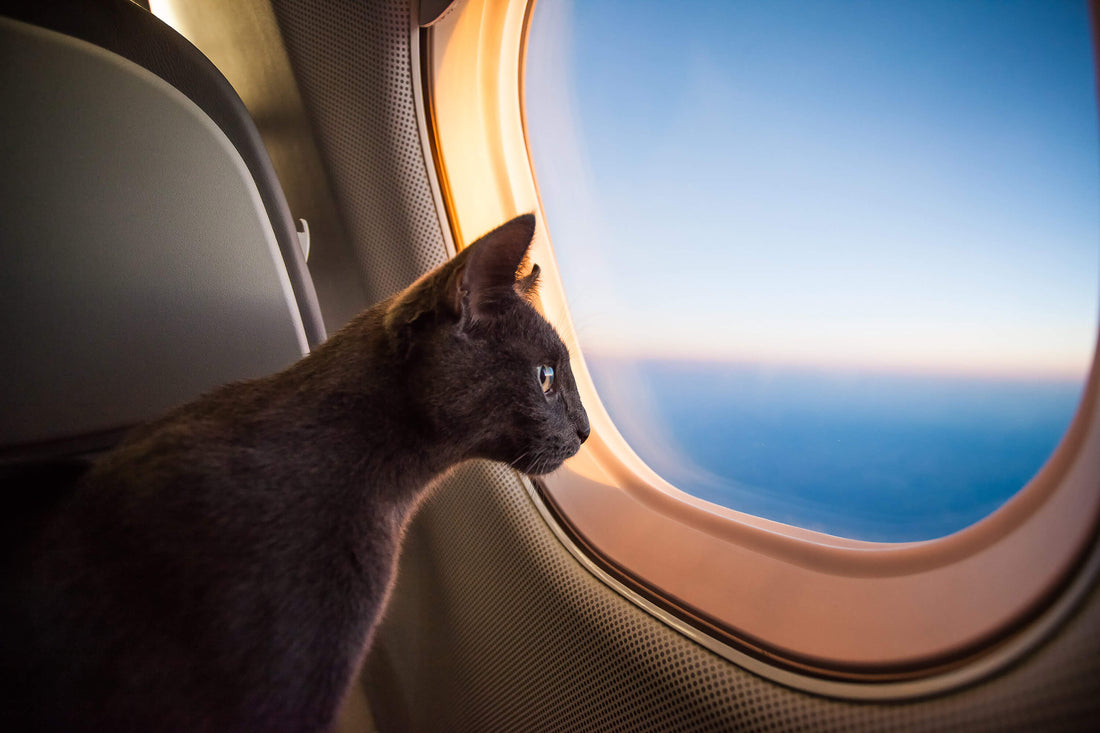
7 Tips for Flying with Cats
Generally speaking, cats are a lot less inclined for adventure than dogs are. Our feline friends are not fond of changes to their environment or routine. For these reasons alone, taking your cat on an airplane might be an extremely stressful situation for them!
Unfortunately, we can’t always leave our furry friends at home, and they have no choice but to accompany us on our travels. If you’re preparing to catch a flight with your cat, use these tips to make sure you’re both prepared for the trip.
Contact the airline
The first thing you should do after deciding to bring your cat with you on a plane is call the airline you’ll be traveling with. Some airlines will require documentation of your cat’s immunizations or health records prior to boarding. You might also need to pay pet fare or another fee for bringing your kitty on board.
It’s also a good idea to ask about any restrictions the airline might have in terms of carrier size or type and where cats are allowed to travel on board.
Cabin travel is best
Bringing your pet on board the airplane cabin is typically the safest and most comfortable method of flying for cats. While larger dogs may be required to travel in the cargo hold, cats are usually small enough to be stowed at your feet.
Keeping your kitty with you in the cabin allows you to tend to their needs for the duration of the flight, ensuring that they receive food and water. Your presence nearby can also help keep them calm throughout the flight, rather than stress them out by putting them in an unfamiliar location by themselves.
Book a direct flight
Direct flights are much easier to handle when traveling with pets. Flying from point A to point B in a single trip allows you to minimize travel time overall, as well as reduce the number of trips you have to take through airports with your kitty. This can help keep your pet calm and make the process much smoother.
Prepare for the carrier
Your cat will need to remain in their carrier while you transport them through the airport and for the duration of your flight. If you don’t have a carrier for your cat, make sure you purchase one before you fly. Make sure it’s big enough to allow your cat to lie down and turn around but small enough to meet the airline’s restrictions.
In the days leading up to your flight, it’s a good idea to acclimate your cat to their carrier. Leave it out in your home for your cat to investigate on their own time. You can also try leaving blankets and comfort items inside, enticing them near the carrier with treats and even feeding them in it. The goal is to make the carrier a safe and comfortable space for your cat—not a source of fear only used for trips to the vet!
.jpg)
Pack your cat’s essentials
Any time you travel with your cat, you want to make sure you pack for them, as well as yourself! Create a kitty go-bag that contains enough food for how long you’ll be away and any medications or supplements your cat needs. It’s also a good idea to invest in travel-friendly or collapsible food and water bowls that make it easy to feed your pet on the go.
Make sure you pack any health records or documentation the airline requires for your cat to board, too!
Don’t feed your cat before your flight
Unless you want to have a mess to clean up mid-flight, avoid feeding your cat four to six hours before takeoff. This will ensure they have time to use the litter box and won’t have to go mid-flight where no facilities are available.
However, you should allow your cat to sip on water before and during the flight. Flying can make pets dehydrated, so give your pet small amounts of water inside their carrier periodically. You can place a potty training pad inside the carrier if you’re worried about your cat having an accident.
Help your kitty destress
It’s normal for your cat to appear stressed while flying. After all, they’ve been forced into a small cage, taken to a busy airport and placed in an unfamiliar spot for a slightly bumpy ride! Even still, most vets recommend that you not sedate your pet during your flight.
To help keep your kitty calm, you might consider giving them herbal calming supplements, instead. These types of supplements are not as intense as sedatives but might help your cat remain calm and stable in the new and stressful situation. Providing comfort items, such as a familiar blanket and their favorite toy, inside the carrier can also help keep your cat calm.
Flying doesn’t have to be a scary experience for cats. With some forward planning, you can help make your kitty’s first plane ride as calm and uneventful as possible! Happy travels!


